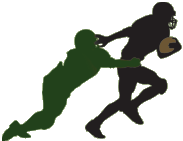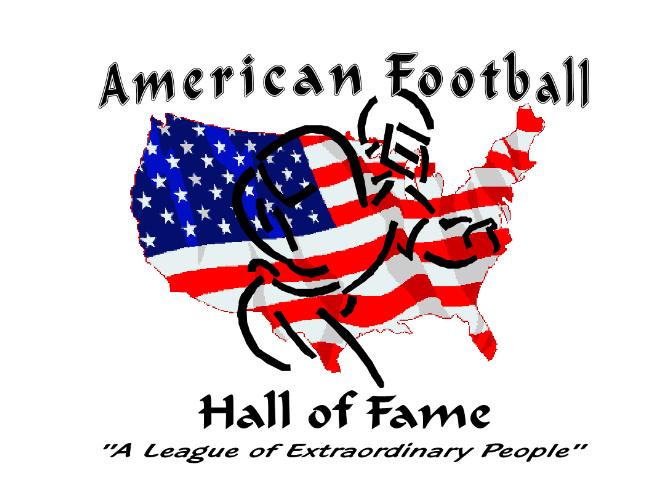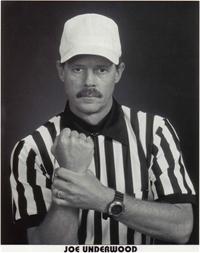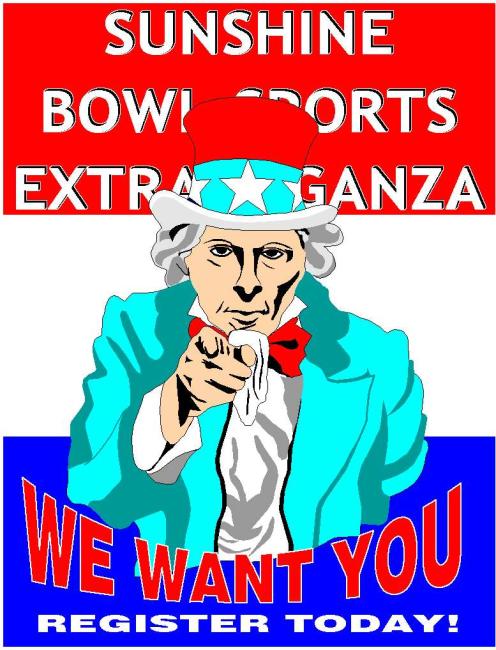
We Love You!
Your AFNT Family.
_____________________________________________________________

LOOKING FOR The "Best of the Best" FOR THE 11th ANNUAL SUNSHINE BOWL CHAMPIONSHIP GAMES.
ANOTHER HISTORIC EVENT!
Make no mistake about it, the "SUPER WEEKEND" January 18 - 21, 2013, in Homestead, Florida, has the best lineup of teams playing in a post-season extravaganza anywhere.
For more information, contact us at (305) 232-1686, and/or check out www.sunshinebowlex.com, to see which game you might be interested in.
__________________________________________________________________________________

HALL OF FAMER DR. JOSEPH W. UNDERWOOD

HALL OF FAME CLASS OF 2010
Category: Official
Hall of Famer Dr. Joseph Underwood is a dedicated football official with over 25 years of experience serving athletes at various levels, from youth leagues to the professional arena. He has served as the president of the Greater Miami Athletic Conference Football Officials Association since 2004. In that capacity, he was proactive in making football officiating better for all officials, as well as for the coaches and student athletes, when he initiated an experimental rule to improve the safety and effectiveness of officials. Through Dr. Underwood's support and efforts, the "Sideline Safety Rule" experiment proved to be successful and was implemented nationally. This rule has, also, been accepted by some minor league teams.
HOF Underwood has also served on the Florida High School Athletic Association (FHSAA) Officials Advisory Committee for four years and was the author of numerous actions to help improve the game of football from a safety, sportsmanship, and officiating perspective. Dr. Underwood has worked three state high school championship games and numerous playoff football contests. His accolades include his recent assignment to officiate high school contests that nationally televised due to the fact that the FHSAA has "confidence enough to place him on nationally televised contests because he possesses the qualities, skill, knowledge and professionalism that the FHSAA thinks all high school officials should emulate."
Additionally, HOF Underwood has been a certified athletic trainer for over nineteen years and a teacher/athletic trainer at Miami High School for well over 21 years, where he is, also, the TV Liaison/Red Hat (TV timeouts) for the Atlantic Coast Conference's University of Miami football team, and has served as the TV Liaison for the annual Orange Bowl Classic football game since 1999. Underwood has acted in many commercials and was in several episodes of the original Miami Vice, and was Referee #4 in Oliver Stone's football movie, Any Given Sunday.
Teaching Experience
| 2004-present | Grade 11, Curriculum writer: Entertainment Law, Miami High School, Miami, Florida |
| 1989-present | Greater Miami Athletic Conference-adults-Football Rules Instructor, Miami, Florida |
| 1988-present | Grades 9-12, Miami High School, Miami, Florida |
| 1984-1988 | Grades 9-12, Earth Science, Drama, ESOL, Miami High School, Miami, Florida |
Special Recognition
| 2012 | Smithsonian Institution Learning Fellow (coming later this month) in Washington, D.C. |
| 2011 | Pearson Foundation Global Learning Fellowship visiting China as an educational ambassador |
| 2010 | FEA (Florida Education Association) Teacher of Excellence for the state of Florida |
| 2010 | Inducted into the Athletic Trainers' Association of Florida (ATAF) Hall of FameI |
| 2009 | Miami High Alumni Association Teacher of the Year |
| 2008 | Japan Fulbright Memorial Fund Teacher Program visiting Japan as an educational ambassador |
| 2007 | Inducted into the National Teachers' Hall of Fame in Emporia, Kansas |
| 2006 | Toyota International Teachers Program-Galapagos Islands |
| 2006 | Disney Teacher Awards National Selection Committee |
| 2005 | Special Teacher Proclamations-MDCPS School Board |
| 2005 | Teacher of the Year and Region TOY Finalist (2003) |
| 2005 | USA Today Award |
| 2004 | Special Teacher Proclamations-MDCPS School Board |
| 2004 | Disney Award |
| 2003 | Teacher of the Year and Region TOY Finalist (2003) |
| 2003 | National Board Certification |
| 2002-present | Governor’s State Board of Athletic Training Appointee |
| 1995 | HS Athletic Trainer of the Year-Athletic Trainers Association of Florida |
_________________________________________________________________________
THE HEISMAN TROPHY
The Most Prestigious Award in College Football
"AND THE HEISMAN GOES TO"

Ewell Doak Walker, Jr.
Often considered the greatest player to come out of the Southwest Conference, Walker was a junior when he won the Heisman Trophy. For three years he was an All-American at Southern Methodist, where in 35 games he scored 303 points on 40 touchdowns, 60 extra points after touchdown and one field goal. Walker gained over 3,500 yards running and passing, and established several other Southwest Conference records that still stand today. Walker led the Mustangs to the Cotton Bowl in both 1948 and '49. Walker went to the Detroit Lions where he played for six seasons, leading the league in rushing in his best year.
1948 WINNER Position: Running Back
School: Southern Methodist
Years: 1946-1949
Inducted: College Hall of Fame in 1961
Jersey Number: 37
Height: 5' 11
Weight: 173
The Voting
Place |
Name |
School |
Class |
Position |
Points |
| 1 | Doak Walker | Southern Methodist | Junior | RB | 778 |
| 2 | Charlie Justice | North Carolina | Junior | RB | 443 |
| 3 | Chuck Bednark | Pennsylvania | Senior | C | 336 |
| 4 | Jackie Jensen | California | Senior | RB | 143 |
| 5 | Stan Heath | Nevada | Senior | QB | 113 |
| 6 | Norm Van Brocklin | Oregon | Senior | QB | 83 |
| 7 | Emil Sitko | Notre Dame | Junior | HB | 73 |
| 8 | Jack Mitchell | Oklahoma | Senior | QB | 68 |
Walker became only the second junior ever to win the Heisman, following former Army star Doc Blanchard. The SMU star won in the Midwest, Southwest and Far West, with Justice the winner in the South and Bednarik taking the East. Van Brocklin went on to become a star quarterback and coach in the National Football League and Jensen was a standout outfielder for the New York Yankees and the Boston Red Sox.
No. of registered electors: 908
Date of announcement: November 30, 1948
Date of dinner: December 7, 1948
The positions within each region:
Place |
East |
South |
Midwest |
Southwest |
Far West |
| 1 | Bednarik | Justice | Walker | Walker | Walker |
| 2 | Walker | Walker | Justice | Justice | Jensen |
| 3 | Justice | Bednarik | Bednarik | Mitchell | Van Brocklin |
| 4 | Sitko | Heath | Rifenburg | Bednarik | Justice |
| 5 | Heath | Sitko | Sitko | Jensen | Heth |
Pro Career
Even though Doak brought glowing credentials to pro football when he joined the Detroit Lions in 1950, many National Football League scouts honestly felt that, at 5-11 and 173 pounds, he was too small. They predicted the "big boys" of the NFL would simply overwhelm him. Walker quickly erased any doubt that he belonged in the NFL. In 1950, he was All-NFL, the Rookie of the Year, the league-scoring champion, and a Pro Bowl participant. The honors kept coming for him.
When Doak wound up his six-season career after the 1955 campaign, he had been named All-NFL five times and selected to five Pro Bowls. It’s no coincidence that, during the his six-year career, the Lions enjoyed their finest years ever with three divisional titles and NFL championship victories over the Cleveland Browns in 1952 and 1953.
Doak was a do-everything contributor for the Lions. His career chart shows entries in every possible statistical category – rushing, passing, receiving, punt and kickoff returns, punting, place-kicking and even interceptions. Because he did so many things, his career figures are not overly impressive except in the scoring column, where he scored 534 points and won two NFL scoring titles. Walker had a knack of making the big plays in the most important games.
- In 1952, he returned from an injury-enforced layoff to throw a 24-yard touchdown pass to Leon Hart in the divisional showdown against the Los Angeles Rams.
- In the NFL title game a week later, Doak rushed for 97 yards, and his 67-yard jaunt proved to be the winning tally in a 17-7 victory.
- A year later, in the NFL championship, Walker scored the game's first touchdown and then kicked the winning point in a 17-16 triumph over the Browns.
Doak was elected to the National Football Foundation and College Hall of Fame in 1959.
- - - - - - - - - - - - - - - - - - - - - - - - - - - - - -
Glenn "Mr. Outside" Davis

1946 WINNER Position: Halfback
School: United States Military Academy, West Point
Years: 1943-1946
Inducted: College Hall of Fame in 1961
Jersey Number: 41
Height: 5-9
Weight: 170
Glenn Davis was blessed with Olympic speed in the 100-yard dash, and admitted that he didn't like to run unless it was running in the cause of a team competition. And run, he did - into football immortality as Army's "Mr. Outside" in the mid-1940's. Stationed with "Doc" Blanchard - a.k.a. "Mr. Inside", the 1945 Heisman winner - in the Cadet backfield, Davis was a three-time All-America and the 1946 Heisman Trophy winner. Finishing second in Heisman balloting for both the 1944 and 1945 trophies, Davis nearly became the first double winner of that coveted award.
Davis had the power and instinct to knife through small holes inside tackle, or dodge a defender or pivot out of reach in the broken field. Davis was born in Claremont, a little town in southern California, in 1925. His nickname "Junior" was a joke at the expense of his twin brother Ralph, who arrived several minutes earlier. The two were inseparable and, later, Glenn refused to accept the Military Academy's appointment until Ralph received similar induction.
Under Coach Earl Blaik, one of the greatest coaches in college football history, and during the reign of the Davis- Blanchard tandem, the Black Knights did not suffer a defeat, manhandling the competition, including routs of highly- respected Notre Dame, 59-0 in 1944, and 48-0 in 1945.. He held NCAA records for yards gained per play in one season, 11.5 yards per carry in 1945, and 8.3 career yards per carry. He scored 59 touchdowns in 1944-46. In their three seasons Davis and Blanchard scored 97 touchdowns, a record for two teammates. Davis teamed with Doc Blanchard to form a devastating pair of runners.
With Davis and Blanchard, Army went 27-0-1 between 1944 and 1946. "Mr. Outside" won the Maxwell Award in 1944 and the Heisman Trophy in 1946. He was also among the runners up in 1944 and 1945. Davis also was named the Associated Press Male Athlete of the Year in 1946. He also captured the Walter Camp Trophy during his career.
He and his twin brother Ralph played high school football at Bonita High School in La Verne, California. In 1942, Davis led the Bearcats to an 11-0 record and the school's first-ever football championship, earning the Southern Section Player of the Year award.
He died of prostate cancer at La Quinta, California on March 9, 2005 at 80.
----------------------------------------------------------------------------------
Johnny Lujack

1947 WINNER Position: Quarterback
School: Notre Dame
Years: 1943, 1946-1947
High School: Connellsville, PA (Connellsville HS)
Inducted: College Hall of Fame 1960
Place of Birth: Connellsville, PA
Date of Birth: 1/4/1925
Jersey Number: 32
Height: 6-0 Weight: 180
Lujack took over at quarterback for Notre Dame as a sophomore in 1943 when then QB Angelo Bertelli, and certain other Notre Dame players, were called to active duty with the Marine Corps in World War II. At that position, John led the Irish to three national titles and established a reputation as one of the great T-formation signal callers in college football history.
In his initial start versus Army in '43, he threw for two scores, ran for another and intercepted a pass in a 26-0 victory. John spent nearly three years of his own in the Navy, but, returned in time to earn consensus All-America honors as a junior and senior on Notre Dame teams in 1946 and '47 that did not lose a game.
No slouch as a runner (he also played halfback as a sophomore), Lujack also punted -- and probably made his greatest individual play on defense. He preserved a scoreless tie in '46 between the second ranked Irish and top-ranked Army by making a touchdown-saving tackle of Cadet fullback Doc Blanchard from his defensive back position. As a junior, he finished third in the Heisman voting behind Army's Glenn Davis. As a senior, he earned the Associated Press male athlete of the year award. Lujack played four years with the Chicago Bears, leading the team in scoring each year, tying a record with eight interceptions as a rookie, throwing for a record 468 yards in one game in '49 and playing in the NFL Pro Bowl his last two seasons. An Irish backfield coach for two years following his retirement in '52, Lujack then ran an automobile dealership in Davenport, Iowa, until he retired in 1988. He was elected to the National Football Foundation Hall of Fame in 1960. Lujack recently gave $200,000 to Notre Dame to establish an academic scholarship endowment.
Lujack's Statistics
| Att. | Comp. | Yds. | TD | Pct. | TC | Yds. | TD | |
| 1943 | 71 | 34 | 525 | 4 | .479 | 46 | 191 | 0 |
| 1946 | 100 | 49 | 778 | 6 | .490 | 23 | 108 | 1 |
| 1947 | 109 | 61 | 777 | 9 | .559 | 12 | 139 | 1 |
| TOTAL | 280 | 144 | 2080 | 19 | .514 | 81 | 438 | 2 |
1. John Lujack, Notre Dame (742)
2. Bob Chappuis, Michigan (555)
3. Doak Walker, SMU (196)
4. Charley Conerly, Mississippi (186)
5. Harry Gilmer, Alabama (115)
6. Bobby Layne, Texas (74)
7. Chuck Bednarik, Penn (65)
8. Bill Swiacki, Columbia (61) ___________________________________________________________________________
 "BACK DOWN MEMORY LANE - WHEN THEY PLAYED ON REAL GRASS...
"BACK DOWN MEMORY LANE - WHEN THEY PLAYED ON REAL GRASS...
FRITZ POLLARD
It was at Brown where Pollard, as a halfback, led his squad to the 1915 Rose Bowl. The 1915 Brown team had a 5-4-1 record, including the loss to Washington State in the Rose Bowl. He was the first African American to play in the Rose Bowl, and the second to be named an All-American in college football (the first was Bill Lewis of Harvard 1892-93), and, in 1954, Pollard became the second African American to be elected to the College Football Hall of Fame (the first was Duke Slater of Iowa).. The 1916 Brown team went 8-1. During that year, Pollard made a 48-yard run against Rutgers, 60-yard run against Yale, runs of 47, 35, 34 against Harvard. His teammate at Brown was Wallace Wade, future Hall of Fame coach. After leaving Brown, Pollard briefly pursued a degree in dentistry, worked as director of an army YMCA, and coached football at Lincoln University.
Pollard signed to play for the Akron Pros in the American Professional Football League (APFA) and led Akron to a championship in 1920. He was named head coach in 1921 and continued to play for the Pros as well. The APFA was renamed the NFL in 1922, making Pollard the first African American Head Coach in NFL history.
Pollard went on to coach NFL teams in Indiana and Milwaukee until 1926 when the National Football League, at the urging of George Marshall, owner of the Washington Redskins, ousted all black players and coaches in a fateful decision to segregate. Pollard created a black football team and challenged NFL teams to exhibition games, but was rebuffed. He spent many years urging the NFL to open its doors to African Americans. He retired from football in 1937 to pursue a career in business. The NFL ban on players of color started to lift in 1946 after World War II ended, but not all teams were integrated until Bobby Mitchell joined the Washington Redskins (the last NFL team to integate) in 1962.
Pollard had a strong family history. His sister Noami in 1905 became the first African American woman to graduate from Northwestern; his brother Leslie was on the 1908 Dartmouth football team. Pollard coached football at Lincoln University and owned coal companies in Harlem and Chicago, operated a movie studio, published a weekly paper in New York, founded the nation's first African American investment company, and operated a booking agency.
Pollard died May 11, 1986, in Silver Spring, Maryland, three years before the Oakland Raiders named Art Shell, the first African-American head coach in the NFL’s modern era, as their head football coach in 1989.
| Dinner Prices |
![]()



